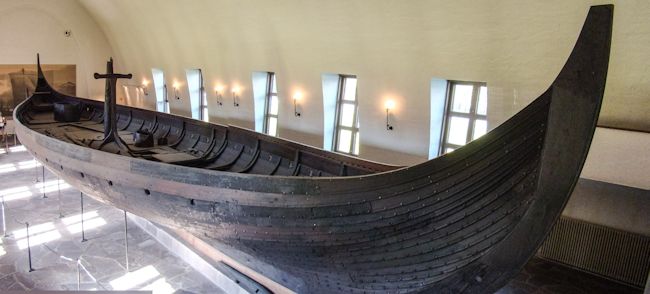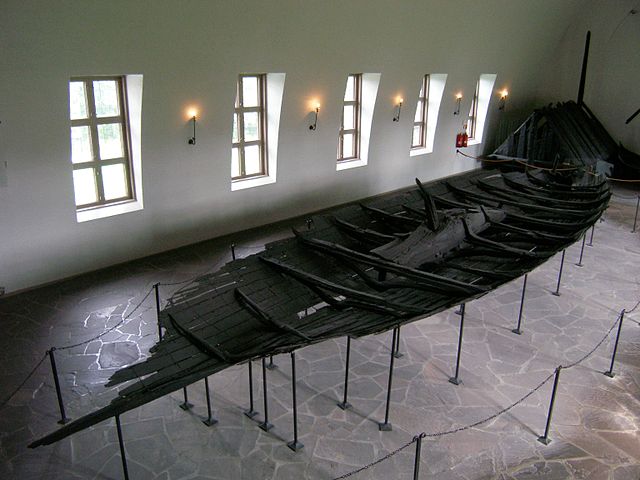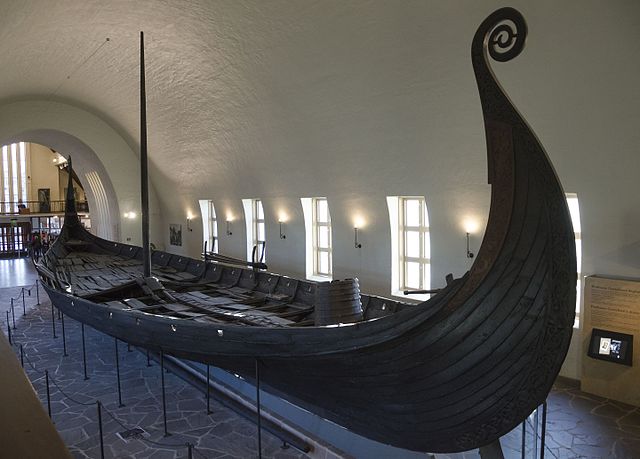By Dimitris Topalis,
The Viking ships belonged to Scandinavians during the Viking Age and were used for a variety of purposes: as a means of transportation, for trading, exploring, and warfare. We know for sure that without these ships, the Viking expansion would never have happened. The Viking ships played a very important part in the culture and the religion of the Vikings during that age. They came in different sizes and forms — going from a fast longship all the way to a big slow cargo ship. The importance of a Viking ship to a Scandinavian is so huge, that most of them were buried with their ship.
The early types of Scandinavian ships
The Viking raids started just before 800 BC, the Scandinavians were able to produce capable and trustworthy ships. The problem that lies with the early types of Viking ships is that most of them have decayed beyond recognition. The image that we now have for the early type of Scandinavian ships comes from the three rich ships that were found in Oslo Fjord in Norway, the Oseberg (843), Gokstad, and Tune (both in 900). The Oseberg ship is the earliest preserved Scandinavian sailing ship with diameters: 21.5 meters long, 5.1 meters broad, with room for 15 pairs of oars, broader (and deeper, too) than, for example, the slender Nydam ship and the slim longships that would appear towards the end of the 10th century. The Oseberg, with her ornate wood carvings, was most likely identified with society’s upper crust, despite the fact that she was seaworthy and had all the essential Viking ship characteristics, she was not yet as capable as the ships that followed. The already more seaworthy Gokstad was slightly larger and deeper, with oarlocks, and sailing ships profited from having oar assistance as well. However, more dedicated warships were also around at this point in time, with the term knar, seemingly indicating early warships with backward-curving stems. The warships’ main purpose was not to fight sea-battles, but rather to navigate sheltered waters to transport their warriors to the interesting point and then pick them up after the raids.

The navigation of the Vikings
We know that the Vikings were fans of raiding and sailing. Τhe thing was, how they would navigate their ships to reach their destination. When they were staying close to the coast, navigation was not a big problem. In Viking navigation, the compass, sea-chart, and logbook do not appear to have been known or utilized. Instead, it appears that the Vikings attempted to island-hop or at least come within viewing range of recognized islands that served as markers over such great distances, while their ability to understand the sun and stars, common wave and wind patterns, the way clouds behave over land, and the appearance of birds all helped out. The most useful routes that the Vikings were from Denmark to the Mediterranean, from Northern Denmark to England, a voyage that took two to three days, from western Denmark to Scotland or the Irish Sea, and from Norway or Ireland to Iceland and Greenland.

The Scandinavian ships in everyday life and culture
As we have mentioned above, the Scandinavian ships were important in the everyday life and culture of the Vikings. They were also so symbolic because of the role that they played in fishing, exploration, and in the raids that most of the Vikings were buried with them. The simplest form of graves came with markings by a stone, which laid out in the pattern of a ship with generally at least one human body buried inside it, usually spread out on the deck or in a tiny room amidships. The deceased was accompanied by a huge array of burial items and personal valuables, which varied greatly depending on the area, animal sacrifices were also popular. The Oseberg ship burial, the richest Viking grave ever found, for instance, contained perhaps as much as 20 decapitated horses alongside its human occupants a noblewoman and her handmaid. The Scandinavian structure of ships become a point of interest for various people, most of them were associated or have felt the presence of the Vikings and helped in the evolution of future ships.
References
- Gareth Williams, The Viking Ship, published by British Museum Press, 1798




